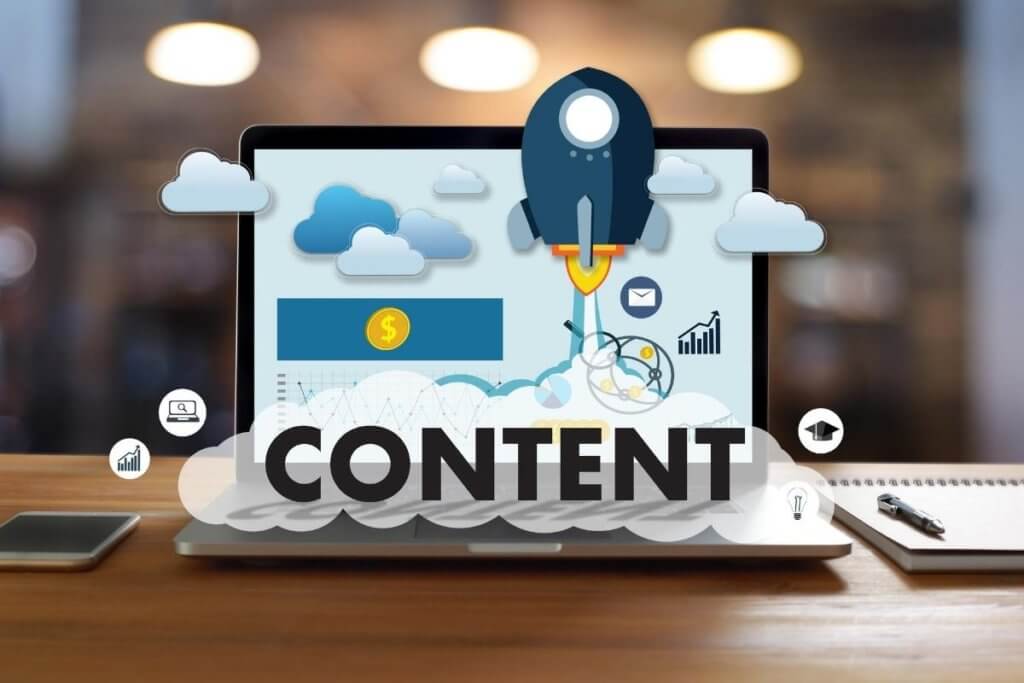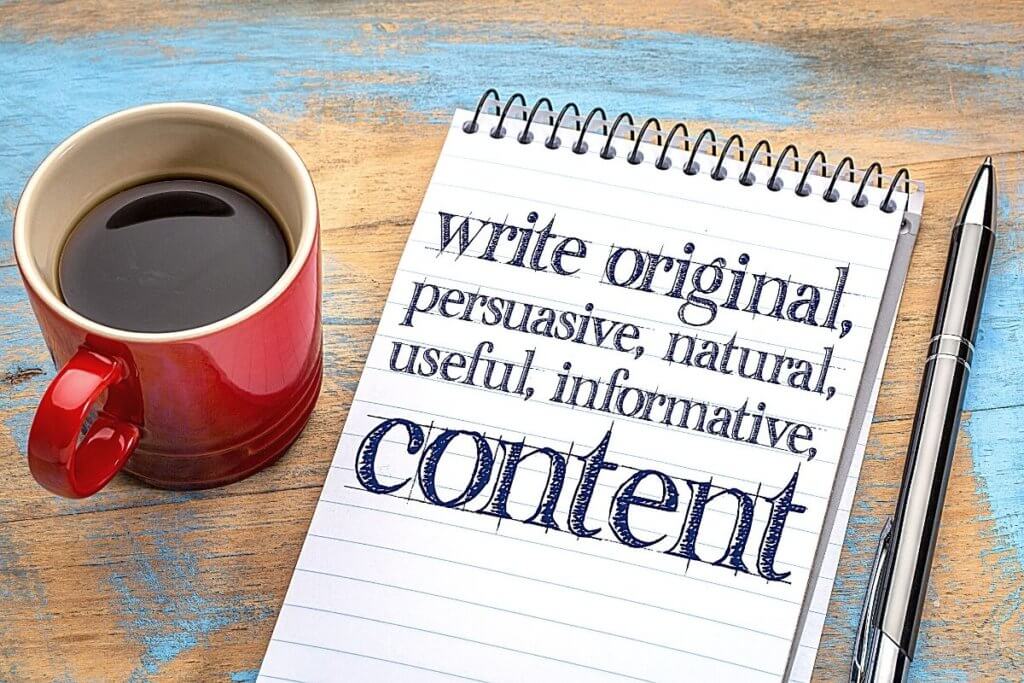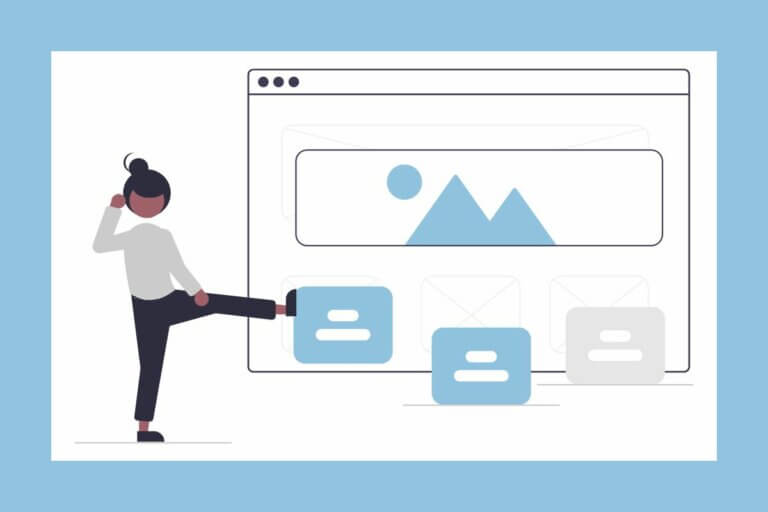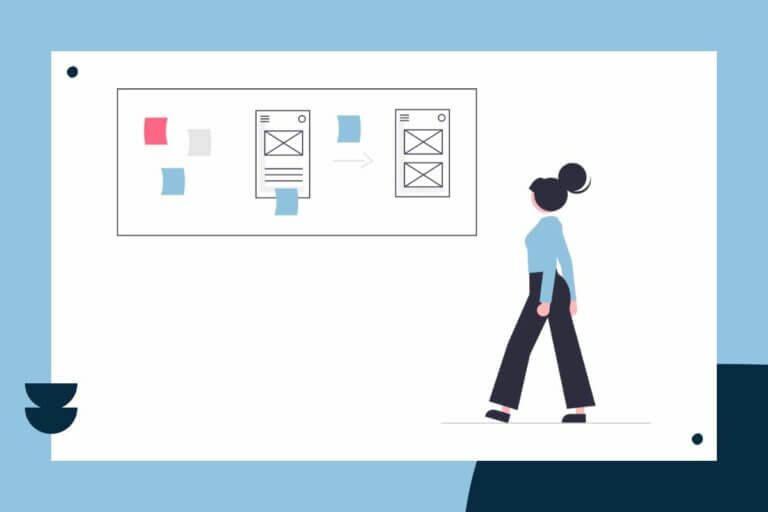Use a Storytelling Framework To Write Your Content
Would you like to write your website content faster? Are you just getting stuck because you don’t know what to write or where to start? Have you heard storytelling is the best way to write content your audience will love, but you’re just not sure what that really means or how to do it?
If so, then following this simple storytelling content writing framework will help you spend less time writing better content that engages your audience.
In this content framework and guide we’ll cover the following topics:
- How do you incorporate storytelling in your website copy?
- What you need to know about your business before you start writing your content
- Some general content writing guidelines to help you get started
- A simple content framework for the main pages of your website

How the Heck Do You Use Storytelling in Your Website Copy?
I’m sure you’ve heard it a lot that storytelling is the way to write good copy. I know I may have even told you that before! But I know the first time I heard tried to do that, it wasn’t so easy. And, I like to tell stories.
So, I had to step back and think about about it for quite a bit. Of course, I knew I wasn’t supposed to make up stories. Our websites aren’t fiction. But, I needed a way to understand website copy as a type of story I’m telling.
Finally, after reading a few books and listening to a bunch of experts in the field, a light turned on in my head. We’re not so much telling a story, but are helping our clients become the hero of their story.
The Journey Is The Story
Our clients seek help because they need help completing some kind of journey they’re on. The journey could be just about anything – a fun adventure, self discovery, or solving a business problem.
We know that we can help our clients complete this journey. So, the job our website copy has is to invite our potential clients to let us be their guide so they can reach their goal. We step into their story and help them along their way.
Things To Know and Understand Before You Write Your Content
If you want to write content that relates to your client’s journey, then you need to understand that journey before you start writing.
So, before you get started, I urge you to identify the following things about your business and your clients.
- Who is your ideal client
- What are your ideal client’s goals, i.e. what journey are they on?
- What problems does your ideal client face
- What solutions you offer to those problems
- The end result your clients get after working with you
- How someone signs up to work with you
- Your unique service proposition
To help you get started with this exercise, you can check out my earlier blog post, How To Tell Your Buyer’s Story.
Create Your Messaging Cheat Sheet
I recommend creating a kind of messaging cheat sheet with the answers to these questions. Then, you can keep your answers handy when you start to write your content.
Open your favorite writing app or note-taking tool. Then, type out the questions and answer these questions in the document.
Question One: Your Ideal Client
Who is your ideal client? Who do you want to work with?
I know it’s tempting here to try to be broad, thinking by serving everyone one you’re making it easy to work with you. But in reality, if you want this to work, you need to narrow this down as much as possible, so that you can understand a very particular journey a potential client is on.
Question Two: Client Goals
What are the main goals your clients have? What is the overarching place your potential clients are trying to get to. What results are they after, and what is motivating them to take this journey in the first place?
Question Three: Client Problems
What are the main problems your clients are trying to solve when they reach out to you? Try to put yourself in your potential client’s shoes. What types of obstacles and issues will they run into while trying to reach their goal?
Question Four: Your Solutions
What solutions do you offer to the problems your clients are having? Here’s where you come in! What little secrets or tools do you have in your bag of tricks that will help your potential client get what he or she wants? What can you teach this person, so that they can get to their destination?
Question Five: The End Result
What is the end result your clients get after working with you? Think about how your clients feel after you solve their problems or help them reach their goal.
Question Six: Unique Service Proposition
What is your 30 second commercial? How do you describe your services to someone in just a few sentences?
Honestly, this might just be the hardest part of this exercise. It’s really hard to describe what you do succinctly. But if you can nail this down, you’re going to have an easier getting someone’s attention and interest.
BONUS Question: What is your sign up process?
What is your process for getting clients and how do you sign them up for your services? Can you offer your clients a simple plan to get started working with you?
If someone is going to work with you as their guide, they’re probably going to want to know where you’re going to take them and how difficult that journey will be. Your potential clients want to know that you have a plan for them.
General Content Writing Guidelines
Remember, your website is often your first introduction to a new customer or client! In fact, your website copy is just as important as the design. It might even be more important!
And yes, while talking in person is always best, you should do whatever you can to make reading your website content as personal as possible and similar to talking in person.
So, stay away from bland descriptions, overt sales techniques, or long copy about how great you are. Instead, write like you’re chatting with someone in person. Try writing your copy then reading it out loud to hear how it sounds.
General Content Structure
Put the important stuff first.
Most people who visit your website want to get information, accomplish a task, or solve a problem. And, you’ve got about 3 minutes at best to let this person know you are the person who can help them get what they want.
If you don’t make what the site visitor is looking for easy to find, they’re likely to navigate away.
For example, on your home page, you want to make it abundantly clear right away what it is you do and who you help. Take a look at your 30 second commercial. This is a great place to get inspiration for the copy for the first section of your home page.
Headings and Headlines
Your headings and headlines are very important! When people land on a page, they look at the headline to know if they’re in the right place.
If you’re creating copy for your homepage or a landing page, your value proposition may serve as a great headline. For other pages on your site, make sure your headline clearly identifies what the page is about and what visitors can find there.
You can try to think of it like this. The page heading is your invitation to the visitor to keep reading the page and learning about how you can help them. Ideally, this heading relates to a particular part of your client’s journey or a solution they’re after.
Make Your Text Easy To Read
People are busy, and don’t have the time, energy or interest to read every word of content on your pages. Therefore, make your content easier to digest by highlighting the main points.
Making your content easier to read is mostly about formatting. Here are a few tips:
- Break up big paragraphs. Keep paragraphs to 2 or 3 sentences
- Use subheadings every 2 – 3 paragraphs
- Bold important points in your text
- Use bullet points
Don’t Stuff In Keywords
Please don’t throw in a kitchen sink of buzz words for your industry! Nothing will send a site visitor away from your website faster than that. However, you can still think about SEO when creating your content. Focus on using words that relate to your client’s journey and deliver your message. Try to use language that can easily answer your audience’s common questions.
Also, try to use your main keyword in the first few paragraphs and use it in at least one heading. Plus, use heading tags to break up your paragraphs.
Your Writing style
Consider your audience
If you want to write web copy that connects with your site visitors, you need to write using terminology they understand.
Using jargon and complex writing doesn’t necessarily make you look smarter or like the expert. Instead, focus on writing copy that builds confidence in your service or product.
Again, try to step into your client’s story and journey. What words will they understand and resonate with them while they’re on this journey? What can you say that gives the reader confidence that you can and want to help them?
Be Unique
If you want to really stand out from your competitors, don’t sound like everyone else in your field. And, by speaking to a very particular and well-defined audience, you can even stand out more.
The idea here is to attract your ideal customer. This is the person you’re mostly likely to help and you want to work with. So, don’t be too afraid to turn some people off. You probably don’t want to work with them anyway.
Here’s a simple tip to see if you’re differentiating yourself from the crowd: Try switching out your business name in your copy with your competitor, could someone mistake your copy for theirs?
If so, your content is too generic to stand out.
Use positive language
If you want readers to remember your website in a positive way, use positive language in your copy. Using positive language is sometimes difficult to do when trying to talk about your audience’s problems and frustrations. But most people are attracted more to positivity than to negativity.
Compare these two headlines:
Losing sleep worrying about your waistline? Try our new diet!
Get better sleep, look great and improve your health! Try our new diet!
While using fear and negative language is a good tactic sometimes, (it can help show why people need your service or product), try to make sure most of your web copy focuses on the good end results people get from your service or product.
Other considerations
Write, then cut down. Less is often more.
Remember, writing is a process. Often, your first draft ends up being longer or more complex than it needs to be. That’s why you should always edit down your web copy.
In fact, this is not the first version of this blog post! I published it and wasn’t happy with it. So, I went back and edited it no less than a week after it launched.
Create a draft, then read it. Look for ways to break up your sentences or make them shorter. In some cases, you can delete whole paragraphs or sections from your copy because you’re being repetitive or long-winded.
Get help when you need it
Not all of us like to write. But, a lot business owners want to write their own content for a variety of reasons. If you don’t like to write, or if it isn’t something you feel you’re good at, then get some help! You want your web copy to connect with your audience and engage them. Often, professional copy writers can help you.

A Content Framework for Common Website Pages
Okay. Now that you’ve got an idea how to write your content, let’s talk about what to put on each page of your website. Below is a basic framework for the types of copy on basic website pages. The elements of each page of your website may not necessarily flow in the same order as included here. So, feel free to adjust things, depending on the nature of your business and your client’s journey.
Home Page
Hero Section
The Hero Section is the first section of your home page. This section often includes a background image or graphic and a big headline.
I really like that this section is called the Hero Section. Why? Well, it’s our opportunity to show we understand who the heroes are that we are helping, and what these heroes want to achieve.
Usually, this section contains your unique service proposition and some type of call to action. A call to action is some type of element or text that asks your site visitor to take a specific action. This action could be call you, send you an email, or download a freebie.
You want your hero section to make it very clear to your site visitors what you do and how you help them. You’ve only got a few minutes at best to keep their attention here.
Your Solutions
Once you’ve got the visitor’s attention, you want to make it very clear that you understand the problems your target audience faces and how you solve those problems.
Often, this section includes very brief descriptions of your service offerings, with links to your service page(s).
Sometimes, this section also contains a short paragraph that shows how you understand or can identify with the problems you solve. It may include rhetorical questions to grab the reader’s attention.
If you only offer one service, you can also include instructions or explain how easy it is to get started working with you. Finally, you just might want to invite the ready to explore other parts of your website.
About You
Your home page usually includes a short paragraph about you and your history. Try to use this paragraph to show how you are the right person to help your ideal client. You don’t want to brag, and it’s often not necessary to list out all your qualifications. Instead, try to show how your experience makes you uniquely qualified to help your target audience complete their journey.
Social Proof
It’s very helpful to include some testimonials, case studies, or a list of people you work with. If you can, include reviews or testimonials from public places, like Google of Facebook. People tend to believe those more than hand-picked testimonials.
Links to Other Pages
Because you want visitors to stay on your website and learn more, bloggers often share recent blog posts, creatives may share portfolio links, or there may be another part of your website you want to showcase on your home page.
Call to Action
You can also include another call to action at the bottom of the page. This may or may not be the same call to action as in the hero section. You could add an opt-in for a lead magnet here.
The call to action could also be a contact form.
About Page
Did you know the about page is generally the second most visited page on your website? So, it’s definitely worth your while to take some time writing the copy for this page. Here’s your chance to really show how you understand your client’s story and goals. Maybe you’ve been on the same journey. Or, you’ve got some great insight or skill that is necessary to complete the journey.
Heading
Again, every page needs a good heading or title that clearly explains what the page is about. Here, try to write a heading that shows how you solve your client’s problems or that you truly understand the problems.
Benefits You Offer Your Clients
Write a small section to talk about the benefits your services offer, not just the features. The benefits are what the client gets or how the client feels.
For example, a feature of my service is I set up your WordPress theme. The benefit is you don’t have to set up your WordPress theme. Or, a benefit a Sherpa might offer is helping someone reach their destination without being so fatigued. Part of the service is using a horse to carry the load.
Your Why
Include a few sentences about why you do what you do. This will help you connect with your target audience on a more personal level, and build the “know, like and trust” factor that is so important to your business.
You may also include a mission statement or a values statement.
Why Work With You
Often, there will be a short section about why someone should work with you and why you are different from your competitors. You can include a bullet list of how you’re different, or list out the characteristics of your ideal customer or client.
Your History
Include a short paragraph about your history and your qualifications. This is your chance to share your personal story, how you got to where you are now, and how you’ve got the right experience to help your client.
Social Proof
Social proof, like testimonials and case studies, should be included on all pages of your website, if possible.
Call To Action
Identify the single most important action you’d like a visitor to take on this page.
Services Page
This page should clearly explain what services you offer and how they will help your target audience.
Headline
Write a short sentence that clearly describes the purpose of the page. You want someone who lands on this page to understand very quickly what services you offer and how you can help them.
Problems You Solve / Your Promise
You can include a short section about the problems you solve, list the benefits of working with you, or include both. In a way, you are making a promise to your site visitor that you can help them reach their goals and complete their journey.
Service Descriptions
Describe each of your services in simple terms your target audience will understand. Try to explain the services from your audience’s perspective and not your own. For example, you really don’t need to get into the technical details of how you do your work. At the end of the day, your client is not very concerned about the exact tools you use. Your client just really wants to know if you can get them where they want to go.
Pricing
Some websites include pricing information for their services. Whether you do or not depends on your target audience and what you’re trying to accomplish. However, bear in mind that sharing pricing information can help weed out clients who cannot afford your services or let people know they can afford you!
Why Work With You
You may also include another short section about why people should work with you. Some websites frame this as “is this service right for you?” and then list the reasons why someone needs the service.
Social Proof
Include testimonials or case studies that highlight the benefits of your services or products.
How to Get Started
Include a short description of how someone can get started working with you. This can be a simple list or a sentence.
Call to Action
Identify the most important action you’d like a site visitor to take when visiting this page.
Contact Page
Every website should make it very easy for site visitors to find out how to contact you.
Always include your phone number and an easy way to reach out by email. You can use a contact form for email contact. Share your street address if you have a physical location for your business.
You may also include links to your social media accounts, a map to your place of business, and any other information that helps site visitors reach out or find you.
It’s a good practice to include your contact information in your site footer as well.
Some Final Tips
If you’d like to learn more about writing engaging copy for your website, I highly recommend you read Building A Story Brand by Donald Miller.
You can also check out The Story Engine’s Blog. It has amazing content.
Finally, know you’re not alone if you think this is hard. Writing content can be hard, but it can also be fun with the right mindset.
In a way, writing your website copy helps you better understand your business and your ideal client. It’s like telling their story, and getting the perfect ending for them.
It’s a chance to let your amazing personality attract the right clients for you.
And, the great thing about website copy is that it can always be changed, tweaked and improved. It’s like a living story. It can be changed and altered as you wish. So, there’s no need to wait until your copy is absolutely perfect.

